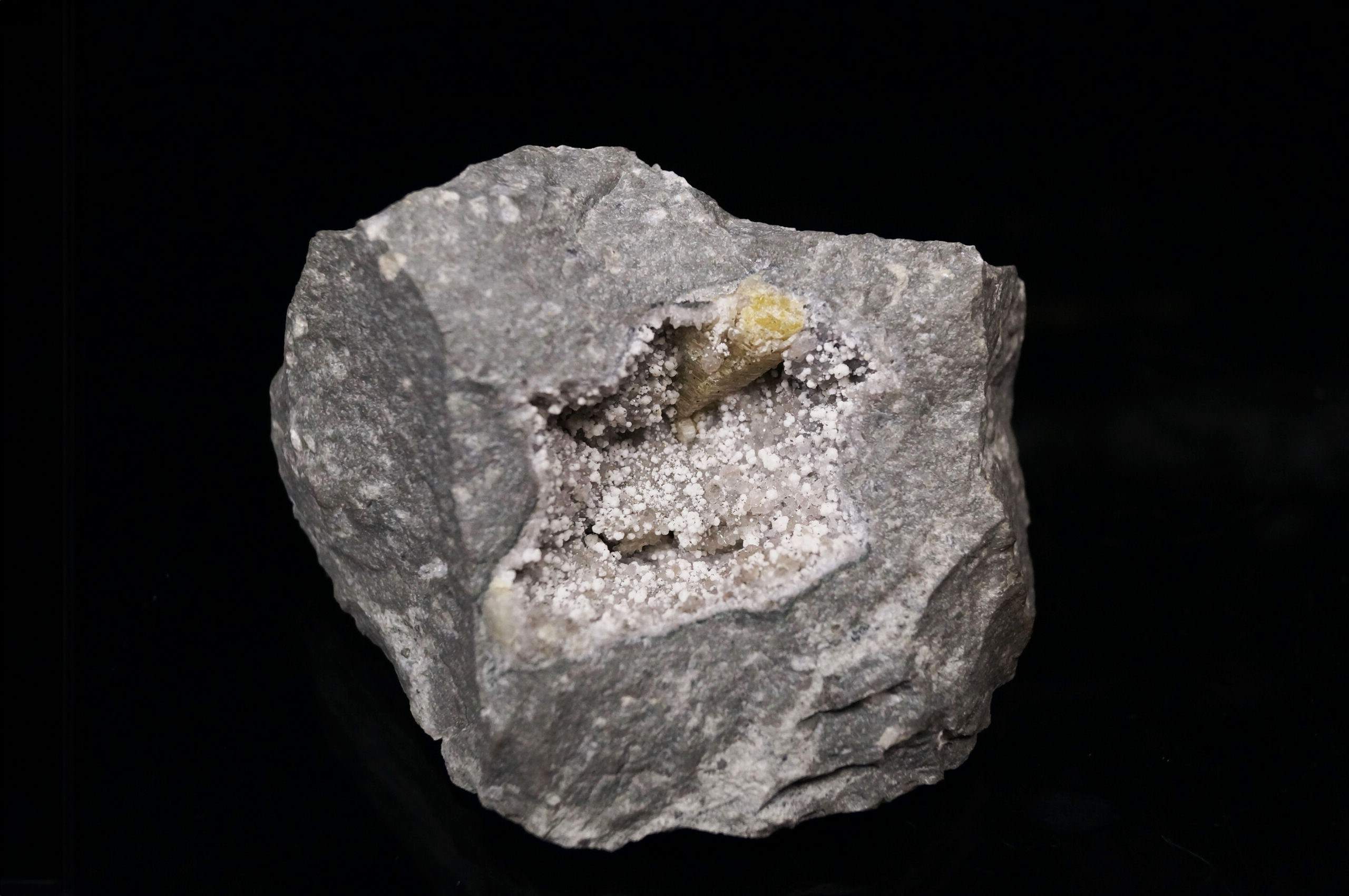
Dawsonite might not be a household name, but this intriguing mineral has a lot to offer. Found in hydrothermal veins, it’s a carbonate mineral composed of sodium, aluminum, and carbonate. Dawsonite often appears in white, gray, or colorless forms, making it visually appealing to collectors and geologists alike. Named after the Canadian geologist Sir John William Dawson, it was first discovered in Montreal, Quebec. Beyond its aesthetic appeal, Dawsonite has practical uses, including potential applications in carbon capture and storage. Curious about this mineral's unique properties and history? Here are 30 fascinating facts about Dawsonite that will spark your interest and expand your knowledge.
Key Takeaways:
- Dawsonite is a unique mineral named after a Canadian geologist. It forms in hydrothermal veins and has potential uses in industrial processes and carbon capture technologies.
- This mineral, with its fascinating properties, has caught the attention of scientists, collectors, and even made its way into popular culture. It's not just a rock, it's a star!
What is Dawsonite?
Dawsonite is a fascinating mineral with a rich history and unique properties. Named after the Canadian geologist Sir John William Dawson, this mineral has intrigued scientists and collectors alike. Let's dive into some intriguing facts about Dawsonite.
-
Dawsonite is a carbonate mineral composed of sodium aluminum carbonate hydroxide.
-
It was first discovered in 1874 in Montreal, Canada.
-
The mineral is named after Sir John William Dawson, a prominent Canadian geologist.
-
Dawsonite typically forms in hydrothermal veins and aluminum-rich sedimentary rocks.
-
It often appears as white or colorless crystals, although it can sometimes have a pale yellow or green tint.
Chemical Properties of Dawsonite
Understanding the chemical properties of Dawsonite can help explain its formation and uses. Here are some key chemical facts about this mineral.
-
Dawsonite's chemical formula is NaAlCO3(OH)2.
-
It has a molecular weight of approximately 144.01 g/mol.
-
The mineral has a monoclinic crystal system, meaning its crystals form in a specific geometric pattern.
-
Dawsonite is relatively soft, with a Mohs hardness of 3.
-
It has a specific gravity of about 2.4, making it less dense than many other minerals.
Formation and Occurrence
Dawsonite forms under specific geological conditions, often associated with hydrothermal activity. Here are some facts about its formation and occurrence.
-
Dawsonite commonly forms in low-temperature hydrothermal environments.
-
It can also form as a secondary mineral in altered volcanic rocks.
-
The mineral is often found in association with other carbonate minerals like calcite and dolomite.
-
Significant deposits of Dawsonite have been found in Italy, Germany, and the United States.
-
In some cases, Dawsonite can form as a result of carbon dioxide sequestration in underground reservoirs.
Uses of Dawsonite
While not as widely known as some other minerals, Dawsonite has several interesting uses. Here are some facts about its applications.
-
Dawsonite is used as a source of aluminum in some industrial processes.
-
It can also be used in the production of sodium carbonate.
-
The mineral has potential applications in carbon capture and storage technologies.
-
Dawsonite is sometimes used in geological research to understand hydrothermal processes.
-
Collectors value Dawsonite for its unique crystal formations and rarity.
Interesting Tidbits
Beyond its scientific and industrial significance, Dawsonite has some quirky and lesser-known aspects. Here are a few fun facts.
-
Dawsonite can sometimes be found in fossilized wood, where it forms as a secondary mineral.
-
The mineral can fluoresce under ultraviolet light, giving off a faint glow.
-
Dawsonite crystals can reach up to several centimeters in length, though they are usually much smaller.
-
It has been studied for its potential to neutralize acidic mine drainage.
-
Dawsonite's unique properties make it a subject of interest in mineralogical studies.
Dawsonite in Popular Culture
While not a household name, Dawsonite has made its way into some niche areas of popular culture. Here are a few examples.
-
Dawsonite has been featured in mineral exhibitions and museum collections around the world.
-
It occasionally appears in educational materials about geology and mineralogy.
-
Some gemstone enthusiasts seek out Dawsonite for its rarity and unique appearance.
-
The mineral has been mentioned in scientific literature and academic papers.
-
Dawsonite's intriguing properties continue to inspire research and exploration in the field of geology.
Dawsonite's Fascinating World
Dawsonite, a rare mineral, holds a unique place in geology. Found mainly in hydrothermal veins, it forms under specific conditions, making it a prized find for mineralogists. Its chemical composition, NaAlCO3(OH)2, gives it distinct properties, including a pearly luster and a white to colorless appearance.
This mineral's significance extends beyond its beauty. It's used in various industrial applications, from ceramics to potential carbon capture technologies. Its ability to store carbon dioxide makes it a subject of interest in environmental science.
Understanding Dawsonite helps us appreciate the complexity and diversity of Earth's minerals. Whether you're a geology enthusiast or just curious about the natural world, Dawsonite offers a glimpse into the intricate processes that shape our planet. Keep exploring, and you'll uncover even more wonders hidden beneath the surface.
Frequently Asked Questions
Was this page helpful?
Our commitment to delivering trustworthy and engaging content is at the heart of what we do. Each fact on our site is contributed by real users like you, bringing a wealth of diverse insights and information. To ensure the highest standards of accuracy and reliability, our dedicated editors meticulously review each submission. This process guarantees that the facts we share are not only fascinating but also credible. Trust in our commitment to quality and authenticity as you explore and learn with us.
